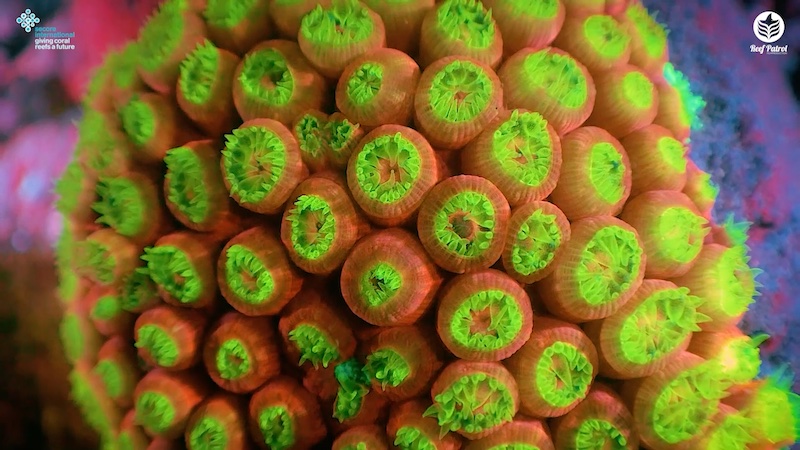Researchers at the Smithsonian’s National Museum of Natural History have discovered a probiotic treatment for stony coral tissue loss disease (SCTLD). We’ve reported on the disease many times since its discovery in 2014 in Florida, including most recently that it has traveled as far south in the Caribbean as Curacao. The exact cause of SCTLD isn’t known, although pathogenic bacteria play a role in the disease, which quickly eats coral tissue away and has had devastating effects on over 20 species of hard corals.
Star corals, Montastraea cavernosa, are usually affected too, but the team discovered a couple of Star coral frags that weren’t withering away and dying like the others, so collected microbial samples from them. They counted 222 bacteria strains, 83 of which showed anti-bacterial, disease-resistant properties, but one named McH1-7, stood out. Could they fight fire with fire and use bacteria against the pathogenic bacteria in SCTLD?
The team conducted chemical and genetic analyses to discover the compounds behind McH1-7’s antibiotic properties and the genes behind those compounds’ production. They then tested McH1-7 with live pieces of star coral. Lab trials showed that McH1-7 stopped or slowed the progression of the disease in 68.2% of 22 infected coral fragments and even more notably prevented the sickness from spreading in all 12 transmission experiments, something antibiotics are unable to do.
We have reported on a topical treatment, Amoxicillin, which is currently mixed into a paste but needs to be applied directly to affected corals. The probiotic bacteria is currently best applied when a plastic bag is placed over the coral and then the bacteria is added in solution to the bag. The researchers admitted that better delivery methods may be needed for widespread treatment of affected corals in the field, and they can’t yet test if that isolated bacterial strain will be effective on all of the two dozen susceptible hard coral species. But it is a huge step in the right direction, and a huge, very positive development in the ongoing battle with SCTLD.
For more information go to Chemical and genomic characterization of a potential probiotic treatment for stony coral tissue loss disease, Communications Biology (2023). DOI: 10.1038/s42003-023-04590-y



